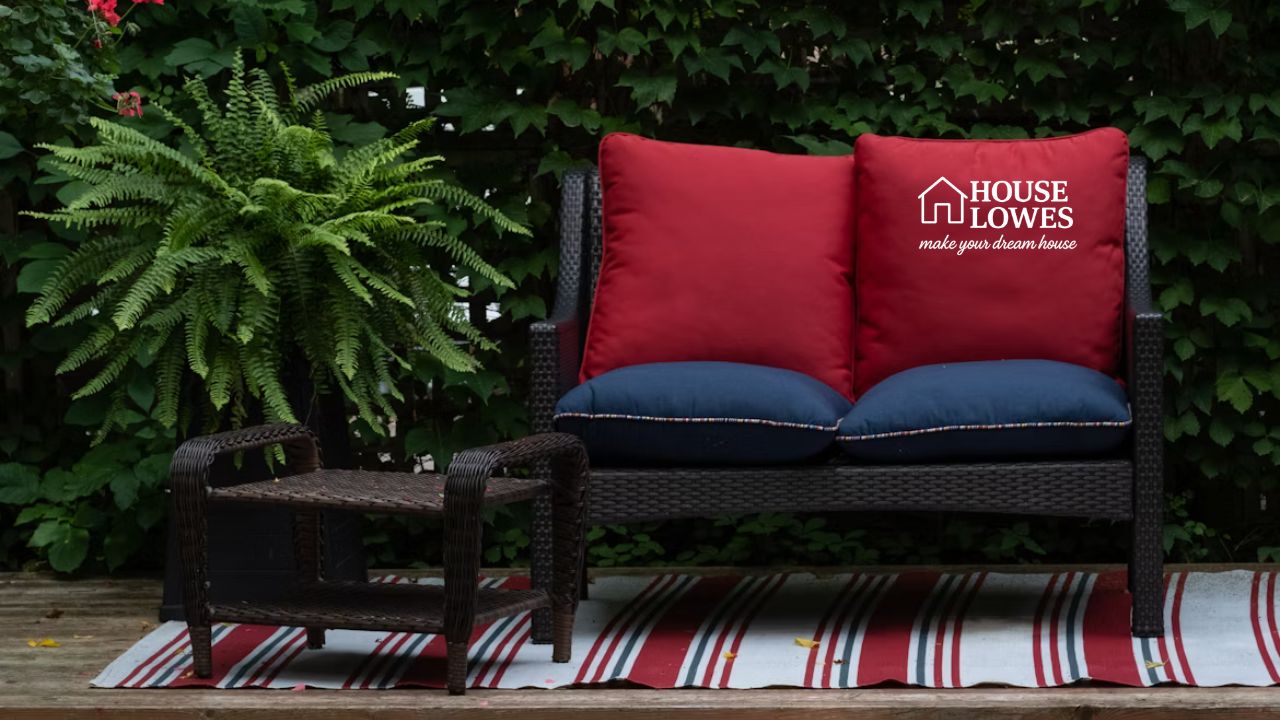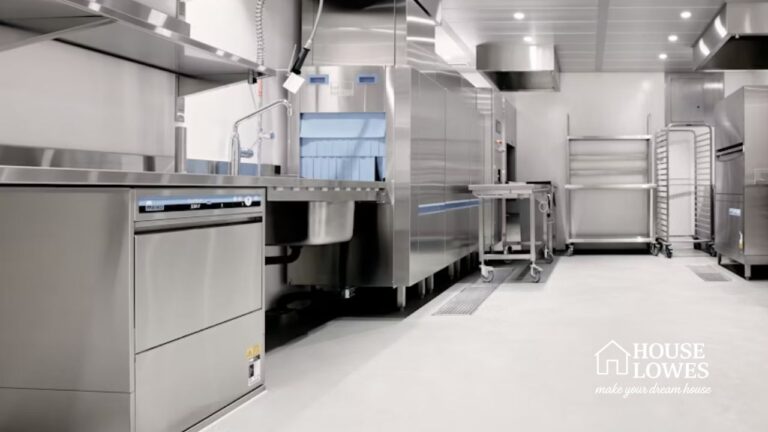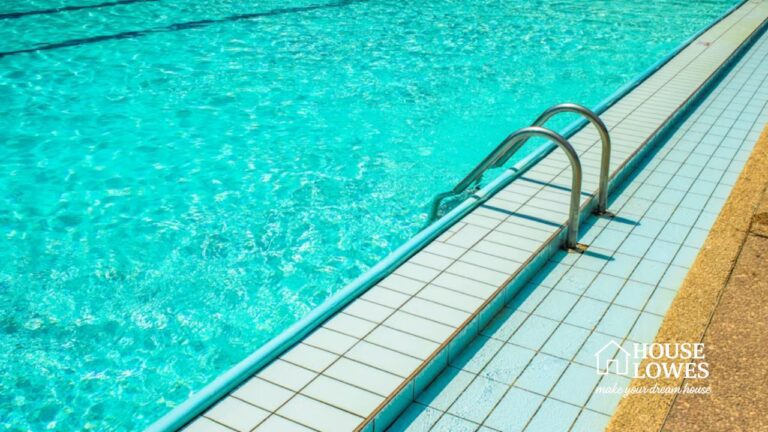Your outdoor space is an extension of your home, a place for relaxation, entertaining, and making memories. A huge part of that comfort comes from plush, inviting cushions. But without proper protection, those beautiful cushions can quickly fall victim to sun, rain, and dirt. That’s where the importance of covering cushions outdoor furniture becomes crystal clear, preserving their look and longevity for years to come.
Protecting your investment is simpler than you might think. From individual cushion covers to full furniture covers, the options are vast and designed to fit every need and budget. This guide will walk you through everything you need to know about selecting the best solutions for covering cushions outdoor furniture, ensuring your patio remains a vibrant, welcoming oasis.
Quick Look: Outdoor Cushion Cover Materials
Choosing the right material is the most critical decision you’ll make. This table breaks down the most popular options to help you find the perfect fit for your climate and lifestyle.
| Material Type | Durability | Water Resistance | UV Resistance | Cost | Best For |
|---|---|---|---|---|---|
| Polyester (600D) | Excellent | High | Good (with coating) | $$ | All-around use, moderate climates |
| Canvas | Very Good | Moderate (with wax) | Good | $$ | Dry climates, rustic aesthetic |
| Solution-Dyed Acrylic | Superior | Excellent | Superior | $$$$ | Harsh sun, humid/rainy areas |
| Vinyl (PVC) | Excellent | Superior (waterproof) | Moderate | $ | Heavy rain and snow, storage |
Why Covering Your Outdoor Cushions is Non-Negotiable
For many homeowners, outdoor cushions represent a significant investment. High-quality, comfortable cushions can be expensive, and leaving them exposed to the elements is like throwing money away. The sun’s UV rays mercilessly fade vibrant colors, turning a once-stunning patio set into a washed-out disappointment.
Rain is another formidable foe. Even “water-resistant” cushions can become saturated, leading to a dreadful growth of mold and mildew. Not only is this unsightly and smelly, but it also poses a health risk. Proper covering cushions outdoor furniture is the first line of defense against this destructive moisture.
Beyond weather, think about the daily grime. Dust, pollen, bird droppings, and tree sap can quickly soil your cushions, requiring frequent and strenuous cleaning. A simple cover takes the brunt of this assault, keeping the fabric underneath pristine. It’s a small effort that pays massive dividends in a reduced workload and a consistently beautiful outdoor space. Choosing the right method for covering cushions outdoor furniture is an essential part of patio maintenance.
Decoding the Materials: What Are Your Covers Made Of?
The effectiveness of any cover comes down to its material. Understanding the pros and cons of each type will empower you to make an informed decision that protects your investment for the long haul. Let’s dive into the specifics of what makes a great cover for covering cushions outdoor furniture.
Polyester: The Versatile Workhorse
Polyester is arguably the most common material used for outdoor furniture covers, and for good reason. It offers a fantastic balance of durability, water resistance, and affordability.
Understanding Denier (e.g., 600D)
You’ll often see a number followed by a “D,” like 600D. This refers to the denier, a measure of the fabric’s thickness and weight. A higher number indicates a thicker, more durable, and more tear-resistant material. For covering cushions outdoor furniture, a 600D polyester is an excellent standard, offering robust protection without being overly stiff or heavy.
User Review:
“I bought 600D polyester covers for my new sectional last spring. We had a surprisingly rainy summer, and I was so relieved every time I pulled the cover off to find perfectly dry cushions. They haven’t faded at all. A total game-changer!” – Jessica P. (4.5/5 Stars)
Polyester’s main weakness is its natural vulnerability to UV rays. To combat this, manufacturers add protective coatings. Look for covers that explicitly mention UV stabilization or a protective backing to prevent the fabric from becoming brittle and cracking over time.
Solution-Dyed Acrylic: The Premium Choice
When you see brand names like Sunbrella, you’re looking at a solution-dyed fabric. This material is the gold standard for outdoor textiles, and its performance is truly exceptional.
The Science of Solution-Dyeing
Instead of dyeing the finished yarn, the color pigment is added to the liquid polymer solution before the fiber is even created. This means the color is locked into the very core of the fiber. As a result, these fabrics are incredibly resistant to fading, even in the most intense, sun-drenched environments like Arizona or Florida. This makes them a superior choice for covering cushions outdoor furniture.
These fabrics are also highly resistant to water, mold, and mildew. While they come with a higher price tag, their longevity often makes them a more cost-effective choice in the long run. If you live in an area with extreme weather, investing in solution-dyed acrylic covers can save you from replacing cheaper alternatives every couple of seasons. This is the ultimate in covering cushions outdoor furniture.
Canvas: The Classic & Breathable Option
Canvas, traditionally made from cotton or linen, offers a classic, rugged aesthetic. Its main advantage is breathability. This natural airflow helps prevent condensation from building up underneath the cover, which is a key factor in inhibiting mold and mildew growth.
Modern outdoor canvas is often treated with wax or a synthetic coating to enhance its water resistance. However, it typically isn’t fully waterproof and may become saturated in a heavy downpour. It’s a great option for drier climates or covered patios where the primary concerns are sun and dust. For those who prioritize a natural look, canvas is a wonderful way of covering cushions outdoor furniture.
Vinyl (PVC): The Waterproof Barrier
For maximum protection against water, nothing beats vinyl. These covers are 100% waterproof, making them ideal for regions with heavy rain and snow. They create an impenetrable barrier that ensures your cushions stay bone dry.
The trade-off with vinyl is its lack of breathability. On a humid day, moisture can get trapped underneath, potentially leading to mildew if cushions are covered for an extended period without airing out. Additionally, cheaper vinyl can become stiff and crack in cold temperatures or under prolonged sun exposure. High-quality, marine-grade vinyl is more flexible and UV-resistant but comes at a higher cost. It’s a very practical solution for covering cushions outdoor furniture.
Two Main Strategies for Covering Cushions Outdoor Furniture
When it comes to the method of covering cushions outdoor furniture, you generally have two paths you can take. Each has its own set of benefits and is suited to different lifestyles and storage situations.
Strategy 1: Full Furniture Covers
This is the most popular and convenient method. A full furniture cover is a large piece of fabric designed to drape over the entire piece of furniture—frame, cushions, and all.
Pros of Full Furniture Covers
- Convenience: It’s incredibly fast and easy. Simply throw the cover over the chair or sofa when you’re done using it. This is a brilliant way of covering cushions outdoor furniture with minimal fuss.
- Total Protection: It protects not only the cushions but also the furniture frame from sun fading, moisture, and dirt. This is crucial for wood, wicker, or metal frames that can also degrade over time.
- One-Piece Solution: There’s no need to find storage space for multiple cushions. Everything stays in place, ready for the next use.
Cons of Full Furniture Covers
- Bulk: A cover for a large sectional can be bulky and somewhat unwieldy to fold and store when not in use.
- Pooling Water: If not fitted properly or if it lacks support, water can pool in low spots on the cover, potentially weighing it down and stressing the seams. Look for covers with built-in vents or consider placing a bucket or beach ball in the center to create a “tent” effect that encourages water runoff.
Expert Tip: Choose a cover with secure fastening systems. Drawstrings, buckles that clip around the furniture legs, and elastic hems are essential. A gust of wind can easily turn a loose cover into a neighborhood kite. This is a critical detail in covering cushions outdoor furniture effectively.
Strategy 2: Individual Cushion Covers & Storage
This strategy involves two steps: using individual zippered covers for each cushion and then placing those covered cushions into a separate storage container.
Zippered Cushion Covers
These are fabric cases made to fit a specific cushion perfectly. They are not the same as the decorative outer fabric of the cushion itself, but rather a protective layer that zips around it. The best options are made from waterproof or highly water-resistant materials. This method of covering cushions outdoor furniture keeps each piece protected.
Deck Boxes and Storage Bags
Once in their zippered protectors, the cushions are moved to a deck box, storage bench, or a large storage bag.
User Review:
“I have limited patio space, so a huge furniture cover wasn’t practical. I got zippered bags for my cushions and a slim deck box that doubles as a bench. It keeps everything dry and out of sight. My patio looks so much tidier!” – Mark D. (5/5 Stars)
Pros of Individual Storage
- Guaranteed Dryness: Storing cushions in a waterproof deck box is the most foolproof way to protect them from rain and moisture.
- Tidy Appearance: When the cushions are stored away, your patio has a clean, minimalist look. It also allows the beauty of the furniture frame itself to be on display.
- Frame Protection: This method encourages you to use a separate, more fitted cover just for the furniture frame, which can be more effective than a single, bulky cover. This dual approach is an advanced way of covering cushions outdoor furniture.
Cons of Individual Storage
- More Effort: Removing, bagging, and storing cushions every night (or every time it might rain) can feel like a chore. This method requires more daily commitment.
- Storage Space: You need a dedicated spot for a deck box or storage bags, which might not be feasible for smaller balconies or patios.
Ultimately, the choice between these two strategies for covering cushions outdoor furniture comes down to your personal preference for convenience versus effort and the amount of space you have available.
Key Features to Look For When Buying Covers
Not all covers are created equal. Beyond the material, certain design features can dramatically improve performance and user experience. When you’re shopping for a solution for covering cushions outdoor furniture, keep an eye out for these essential details.
Air Vents
This is a crucial feature. Mesh-covered air vents allow air to circulate underneath the cover, preventing the “greenhouse effect” that traps moisture and heat. This continuous airflow is your best defense against mold and mildew, especially with less breathable materials like vinyl or coated polyester. Good ventilation is a must-have for covering cushions outdoor furniture.
Padded Handles
Padded handles might seem like a small luxury, but they make a huge difference in usability. They provide a sturdy, comfortable grip for easily placing and removing the cover, especially on large or awkwardly shaped furniture. This simple feature makes the daily task of covering cushions outdoor furniture much more pleasant.
Secure Fastening Systems
Wind is a cover’s worst enemy. Look for multiple security features:
- Click-Close Straps: These buckle around the legs of your furniture, anchoring the cover firmly in place.
- Elastic Hem Cords: A toggle-adjustable cord around the bottom allows you to cinch the cover for a snug, custom fit.
- Drawstrings: These provide an additional tightening point to eliminate slack where wind could catch.
A cover with all three is the gold standard for windy conditions. Secure fastening is non-negotiable for covering cushions outdoor furniture.
Reinforced Seams
The seams are the weakest point of any fabric product. High-quality covers feature double-stitched or heat-taped seams. This reinforcement prevents tearing under stress and, most importantly, stops water from seeping through the stitch holes. Inspecting the seams is a pro-tip for choosing the best covers for covering cushions outdoor furniture.
A Note from a Pro: My Personal Experience
As an outdoor living designer for over 15 years, I’ve seen it all. I’ve witnessed clients spend thousands on gorgeous patio sets only to watch the cushions fade and disintegrate in a few short seasons. The single biggest mistake they make? Underestimating the importance of covering cushions outdoor furniture.
I always tell my clients to allocate 10-15% of their total furniture budget specifically for high-quality covers. It’s not an accessory; it’s an essential component of the system. I personally use a combination method at my own home. I have a large sectional that gets a full 600D polyester cover every night for convenience. For my separate chaise lounges, which I use less frequently, I use individual zippered protectors and store the cushions in a deck box. This hybrid approach works perfectly. Investing properly in covering cushions outdoor furniture is the secret to a long-lasting outdoor setup.
Frequently Asked Questions (FAQs)
Q: Can I just flip my cushions over instead of covering them?
A: While flipping can distribute sun exposure, it does absolutely nothing to protect from rain, dew, pollen, or bird droppings. It’s a temporary fix at best and not a substitute for proper covering cushions outdoor furniture.
Q: Are “waterproof” and “water-resistant” the same thing?
A: No, and it’s a critical distinction. Water-resistant fabric (like polyester or canvas) will repel water for a period, but can become saturated during a sustained downpour. Waterproof fabric (like vinyl) provides a complete barrier to water. For most situations, a high-quality water-resistant cover is sufficient, especially if it has taped seams.
Q: How do I clean my furniture covers?
A: Most fabric covers can be cleaned with a soft brush and a solution of mild soap and lukewarm water. Rinse thoroughly with a hose and let them air dry completely before storing. Never put them in a washing machine or dryer unless the manufacturer’s instructions explicitly say it’s safe, as this can damage the waterproof coatings.
Q: My cover still gets condensation underneath. What am I doing wrong?
A: You’re not doing anything wrong! This is common, especially in humid climates. It’s caused by temperature fluctuations. The best way to combat this is to ensure your cover has good air vents. It’s also a good practice to remove the cover for a few hours on a dry, sunny day to let everything breathe. This is a common challenge when covering cushions outdoor furniture.
Q: Should I bring my cushions inside for the winter?
A: If you have the space, yes. Bringing cushions into a dry, climate-controlled space like a garage or basement is the absolute best way to preserve them through harsh winter months. If that’s not possible, using a heavy-duty, waterproof cover is the next best thing. Even then, make sure they are completely dry before you cover them for the season to prevent mildew. For ultimate protection, covering cushions outdoor furniture and then storing them indoors is ideal.
Admin Recommendation
Durable & Stylish Bronze Metal Roof – Your Complete Guide









